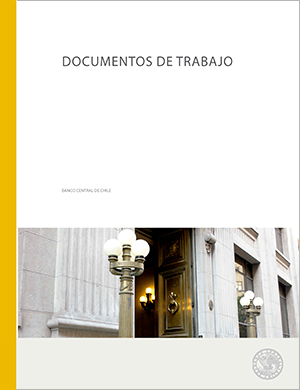Working Papers N° 784: Robustness in Foreign Exchange Rate Forecasting Models: Economics-Based Modelling After the Financial Crisis
Publications
Working Papers N° 784: Robustness in Foreign Exchange Rate Forecasting Models: Economics-Based Modelling After the Financial Crisis
Autor: Gilmour Camilleri , Hsiang-Ling Hsu , Carlos Medel , Stefan Kania , Miltiadis Touloumtzoglou
Description
Exchange rates (FX) typically measures structural misalignments anticipating future short-run dynamics of key macroeconomic variables aiming to correct those misalignments with or without external intervention. The aim of this article is to analyse the out-of-sample behaviour of a bunch of statistical and economics-based models when forecasting FX for the UK, Japan, and the Euro Zone in relation to the US, emphasising the commodity prices boom of 2007-8 and the financial crisis of 2008-9. We analyse the forecasting behaviour of six economic plus three statistical models when forecasting from one up to 60-steps-ahead, comprising from 1981.1 to 2014.6. Our six economicsbased models can be classified in three groups: interest rate spreads, monetary fundamentals, and purchasing power parity with global measures, covering a wide range of macroeconomic indicators. Our results indicate that there are changes of the best models when considering different time spans. In particular, interest-rate-based models tend to be better at predicting before 2008, also showing a better tracking when crisis hit. However, when considering until 2014, the models based on price differentials are more promising, but subject to heterogeneity across countries. These results are important since shed some light on what model specification use and combine when forecast facing different FX volatility.
Working Papers N° 784: Robustness in Foreign Exchange Rate Forecasting Models: Economics-Based Modelling After the Financial Crisis
Boxes and graphics

